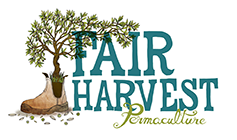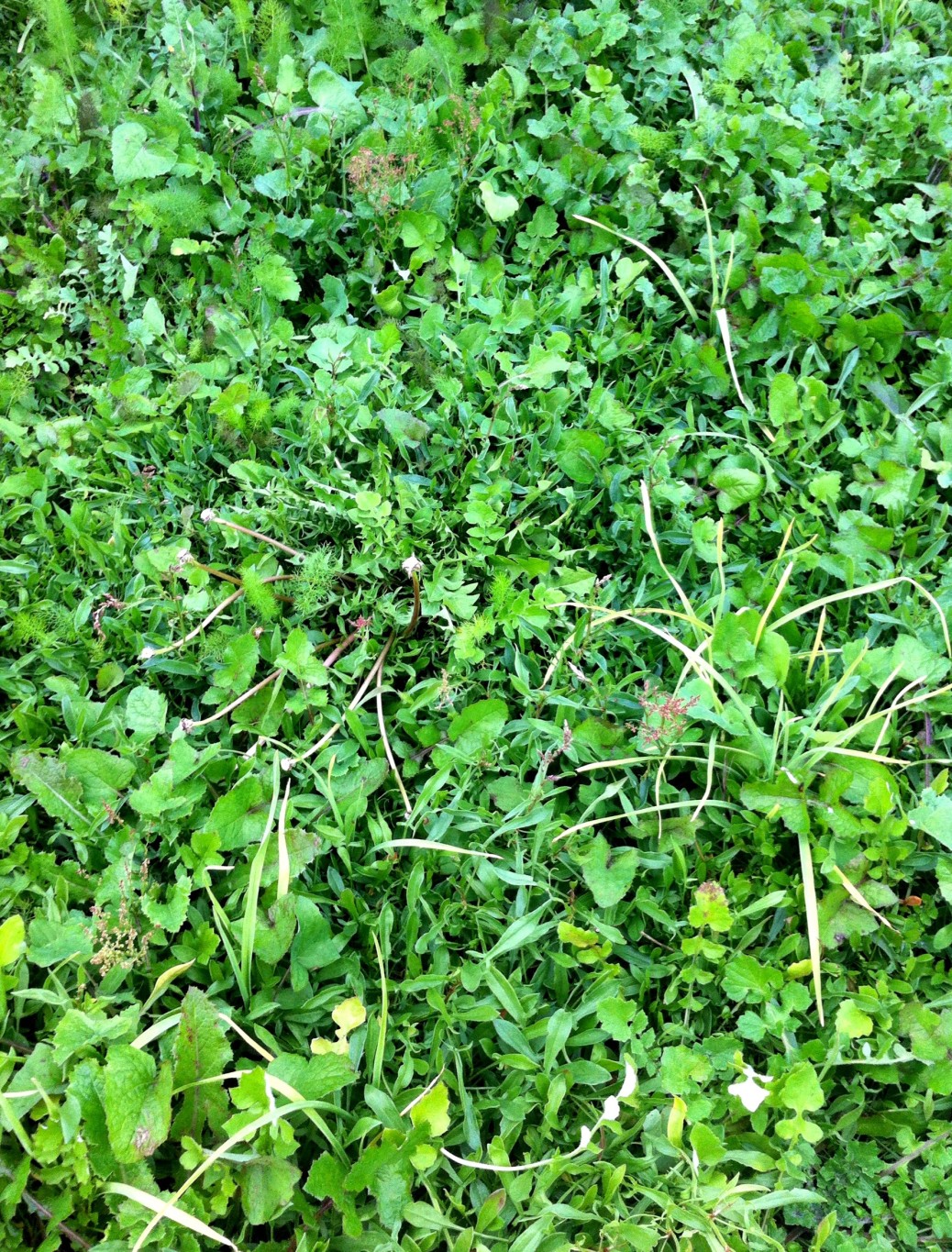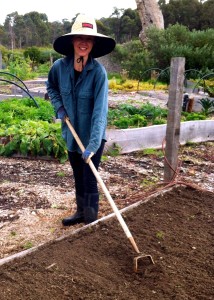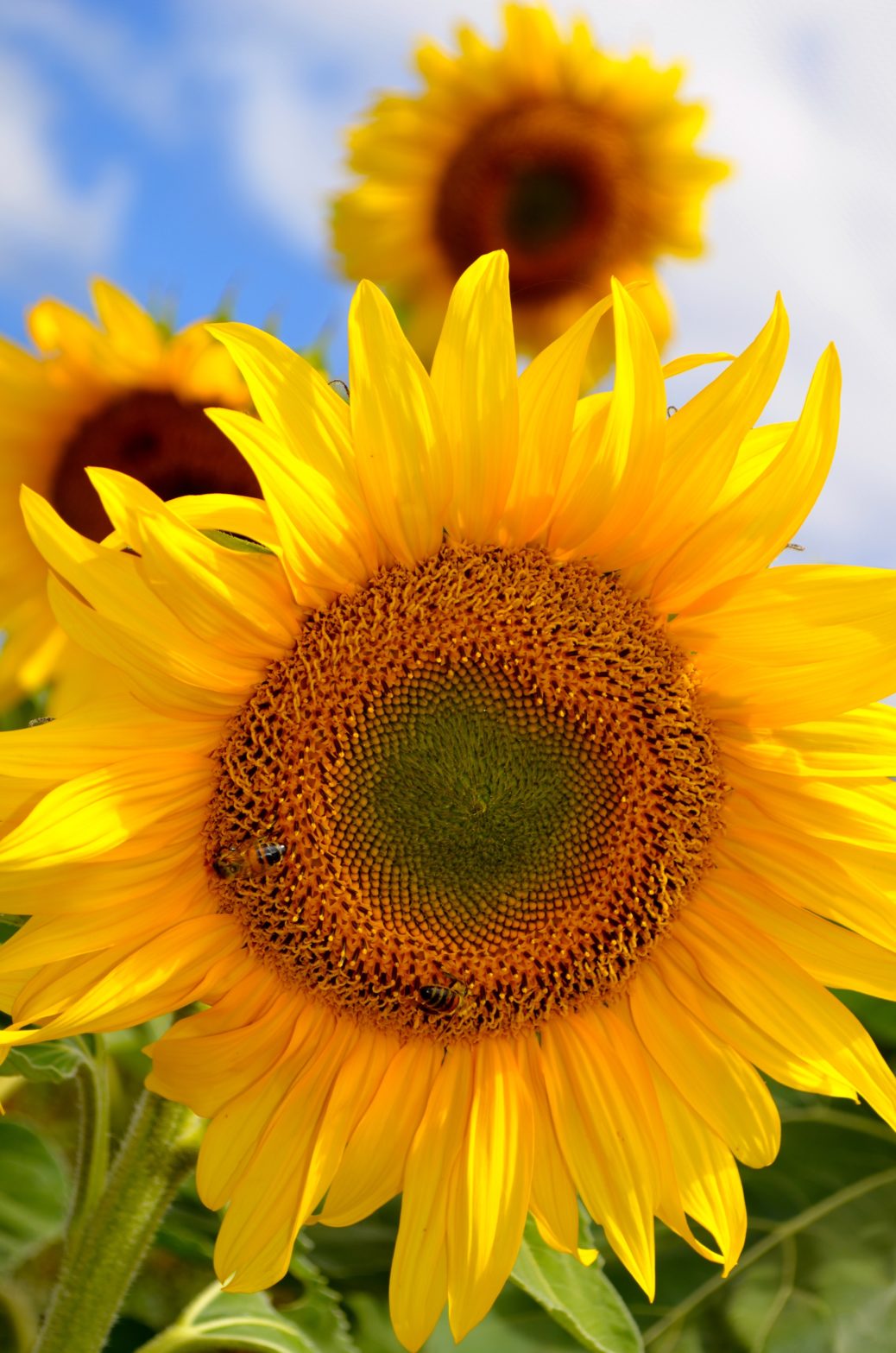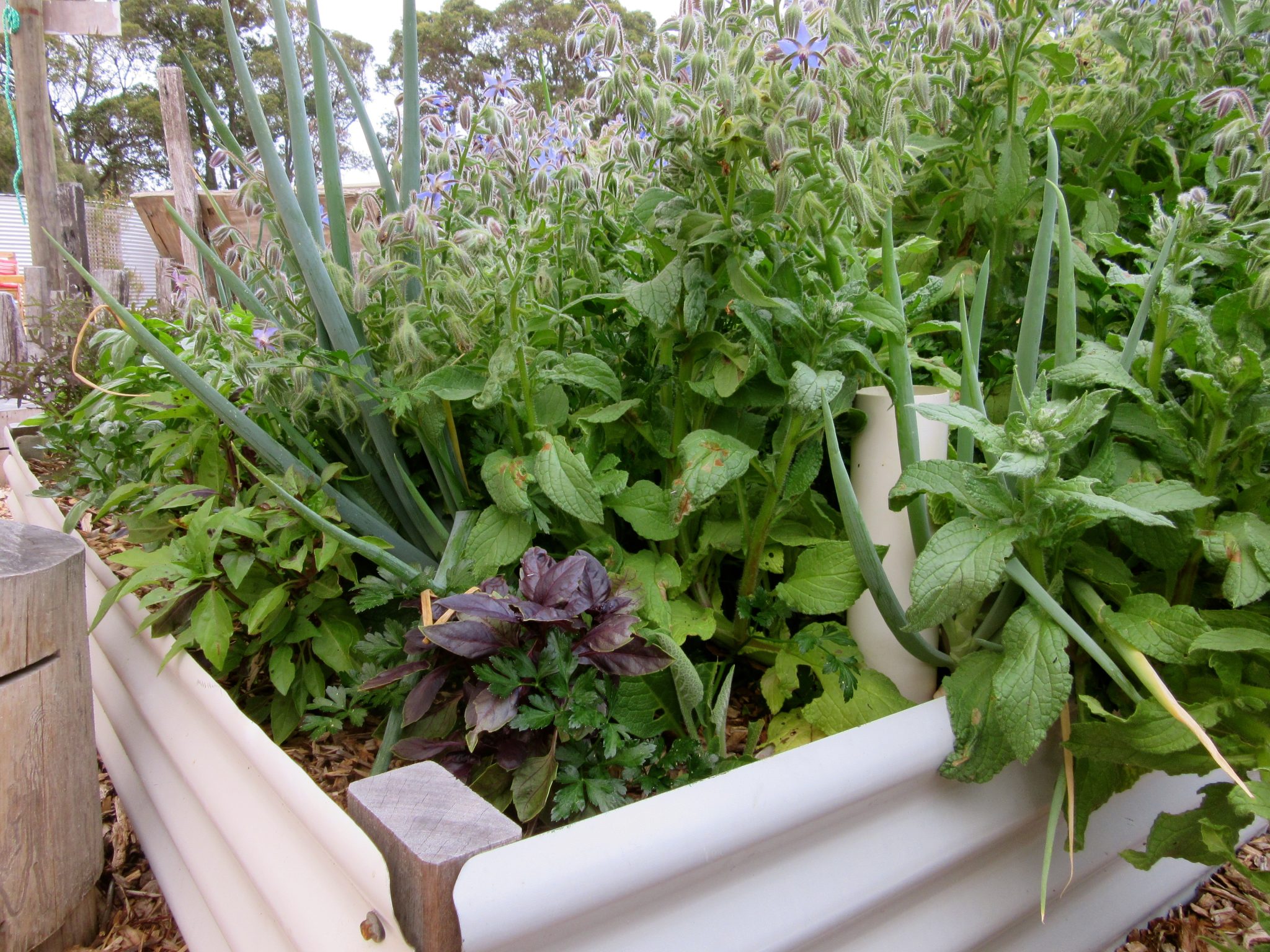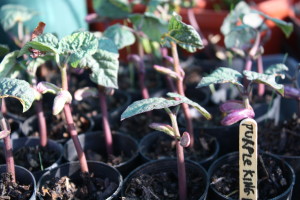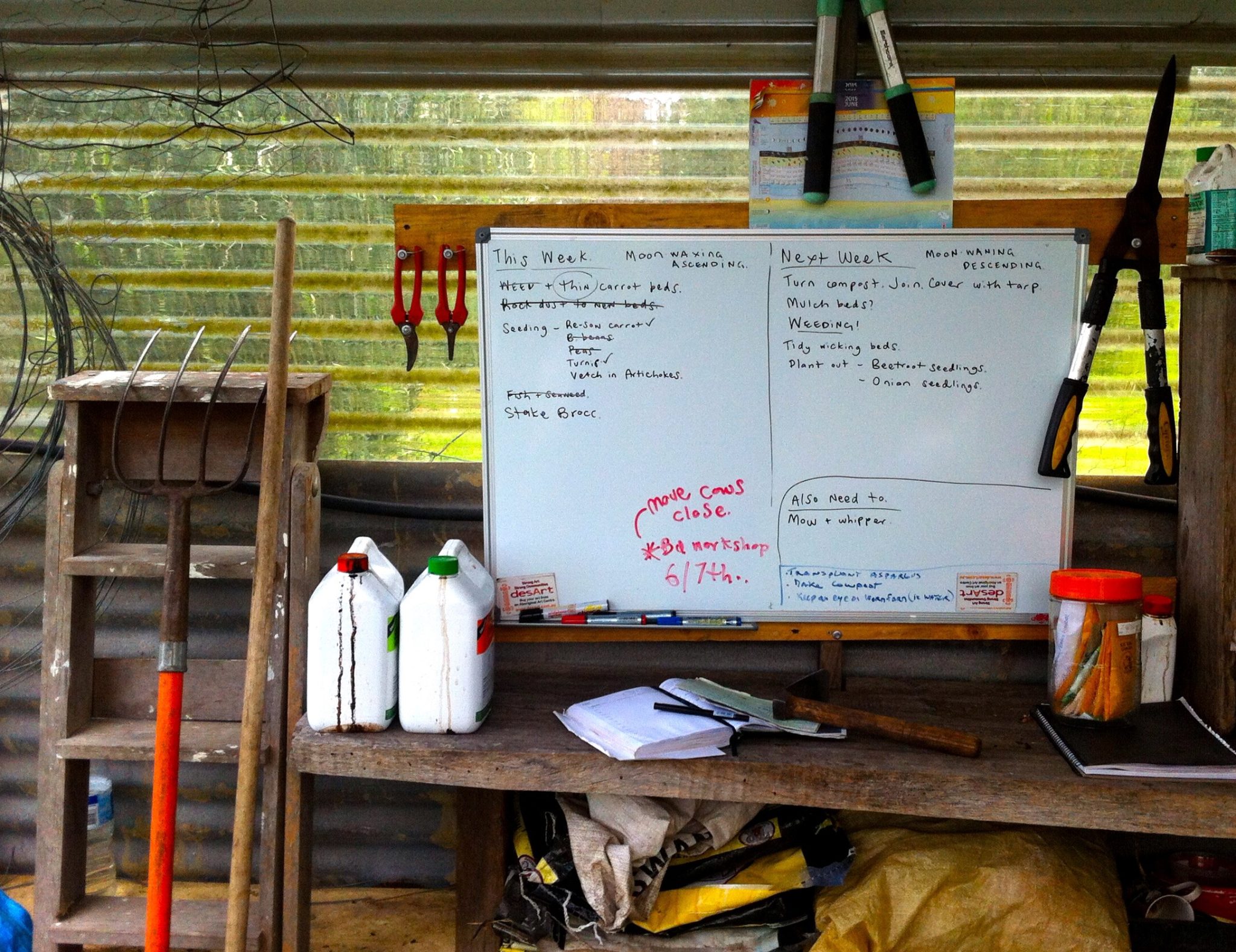So, how do we CONTROL and WORK WITH weeds?
WEED CONTROL
- Timing
- Cultivation
- Mulching / Covering
- Animals
- Hand weeding
WORKING WITH WEEDS
- Green manure
- Weed tea
- Useful/edible
- Soil indicators
- Stockfeed
- Use in Compost
As a gardener weeds have challenged me, winter after winter, to become a little less uptight. Yes… weeds happen and they can even be a positive. Learning that weeds can help in the garden means I can see a salad bar or green manure where once was just an anxiety inducing patch of sore back muscle misery.
Accepting and figuring out the benefits of weeds in the garden is liberating. Not that I can sit back and eat sow thistle omelets all day though! Some well-timed and planned methods to ensure more veggies than weeds go a long way.
- Timing
Catching weeds in autumn as they sprout in the first rains sets in place a much more manageable garden for the rest of the year. Further into winter, dealing with them before seed set helps avoid the whole ‘ones year’s seeds, seven years’ weeds’ situation.
- Cultivation
One of my very favourite tools in the veggie garden is the stirrup hoe. This genius hoe is used to cultivate around crops, its lower blade running just under the soil surface, disturbing weeds and checking their growth. It is most effective in autumn and spring when weed growth is prolific but days are still sunny. On these days any weeds disturbed by cultivating can dry up in the sun and grow no more. Stirrup hoeing once a week for a few weeks works wonders.
Cultivation for weed control fits into the growing timeline early in the life of many veggies. It does require a little soil disturbance and a bnare soil. For me it is worth it to stop weed proliferation in the time before I’m happy to mulch around plants – many seedlings are effected by slaters if mulched too early.
- Mulching
We try to keep bare earth covered in the Fairharvest garden, with one of the benefits being the smothering of weeds and weed seed. Straw, mulched bana grass and woodchip are used, depending on what is at hand.
Straw with seed left in, or meadow hay, end up sprouting more weeds than there would originally have been, so choose carefully. Mulch as weed control also needs to be thick enough to exclude light from the soil. Consider too, that when watering from above soft mulches can act as a sponge and prevent water getting down to soil level.n Not so much of a problem in winter or with dripline laid under the mulch.
Woodchip is a hard mulch and does not act so much as a sponge, if watering from above. I really enjoy using it with crops that can push n. up through such as tubers and bulbs. I plant seed potatoes that are not actively sprouting and let weeds grow prolifically. Before the potatoes sprout the weeds are chipped back with a hoe and covered with a thick layer of woodchip mulch. The weeds are smothered but potatoes push through.
- Covering
Occasionally a patch of weeds will be all too much and I pull out the heavy tarp. Plastic sheeting can be used also but I find it can degrade fairly quickly.
Excluding light from annual weeds for a few weeks until they die off and are broken down, leaves a weedless bare rectangle. I find a few tarps rotated around over winter to be helpful on gravel or woodchip pathway spaces or areas that need to be clear before seeding.
- Animals
At Fair Harvest, geese, chickens and ducks are used for weed control in the enclosed orchards. Geese are grazers and are particularly good at controlling Kikuyu grass, which otherwise would completely take over.
Many animals have the potential to help manage weed growth in or around growing spaces and this strategy fits in so well with a permaculture approach. Careful consideration and familiarity with plant and animal cycles are necessary to develop effective systems.
Whatever you do, don’t let the chickens loose in the veggie patch!
- Hand weeding
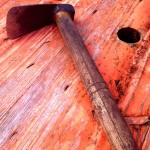
Yes, the old standby. I don’t feel so clever when it comes to hand weeding. Usually something could have been done earlier to avoid the situation. But often time gets away from us, best intentions are overgrown and it’s time to hand weed.
My go-to tools are the ominously dubbed ‘Hacker’ and small, serrated knives or butter knives from the op-shop. Annual weeds are not removed roots and all. I cut them just below the soil surface and leave the roots in to retain a lovely web of organic matter. The knives are perfect for this task on smaller weeds. The Hacker is used on larger weeds. A hand hoe type tool from Indonesia, I have no idea of its correct name. The blade is used to hack just under the soil surface of larger weeds.
Next month we will look at some ways weeds can help in our gardens. Methods to ‘control’ are useful as part of a wider approach where we use and work with weeds. Too much controlling, killing and removing is hard work. Harvesting, observing and growing fertility sounds much more pleasant.
